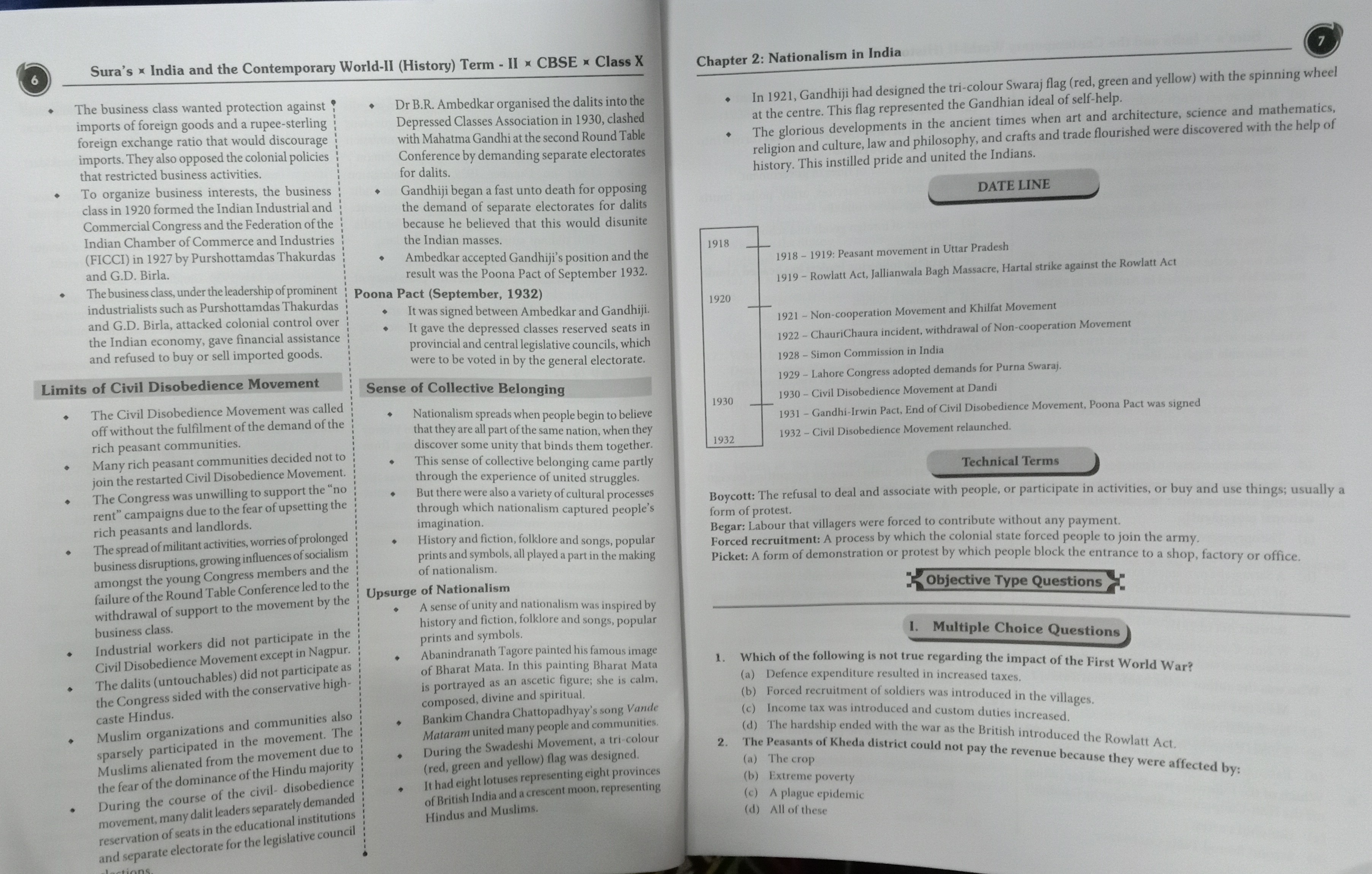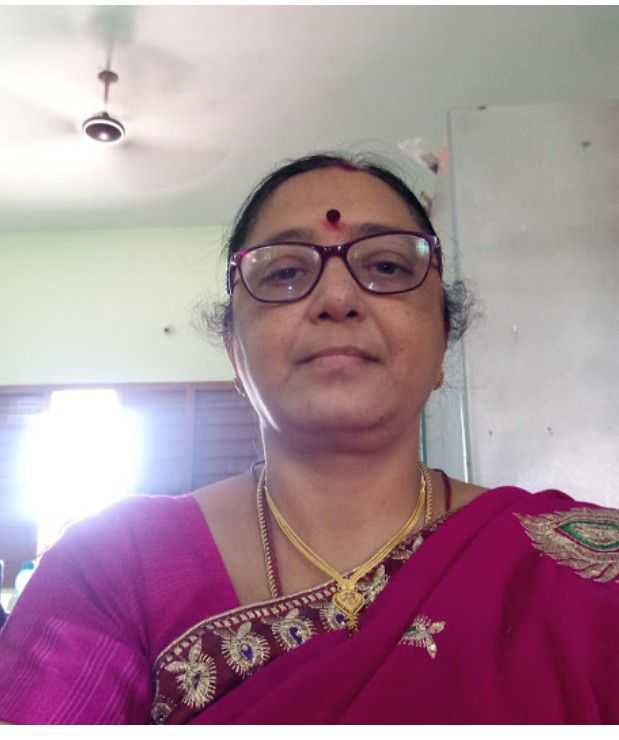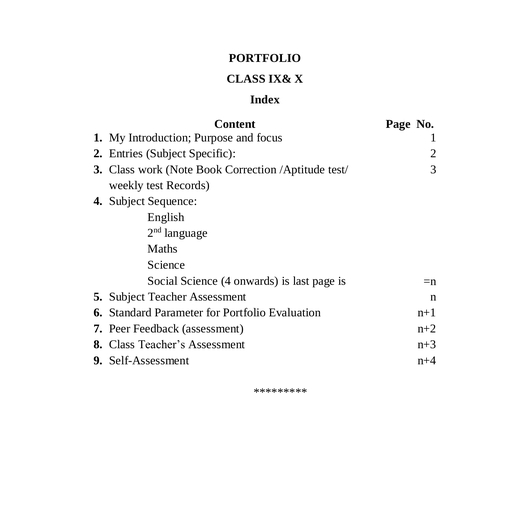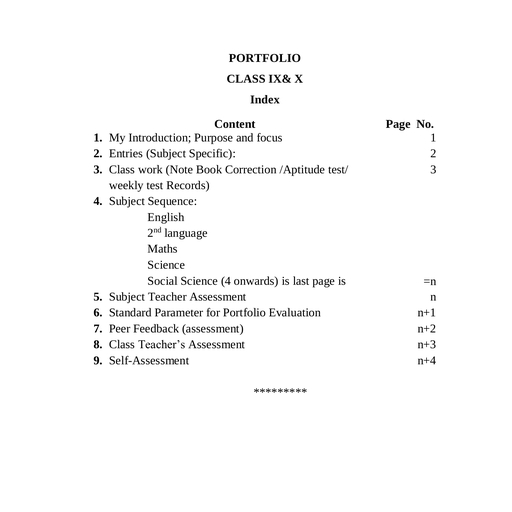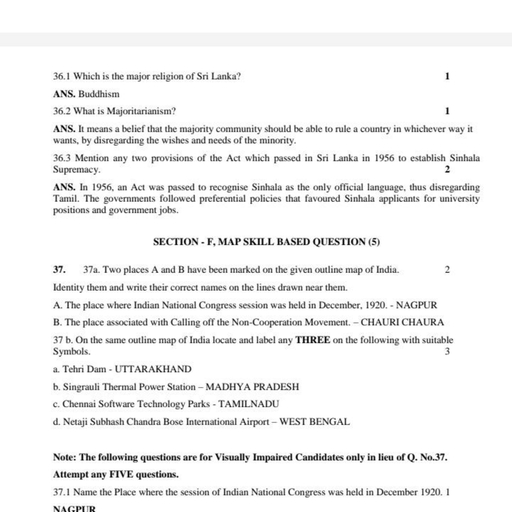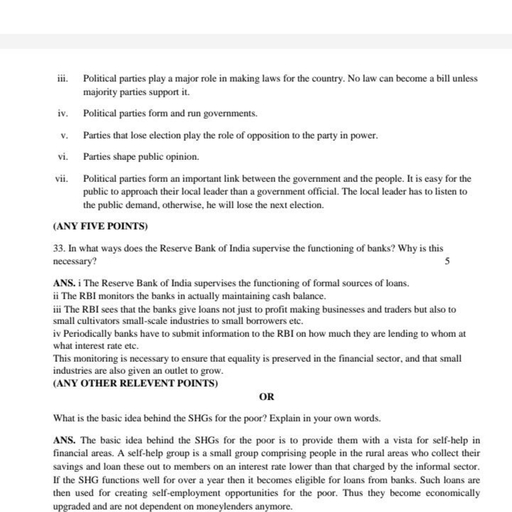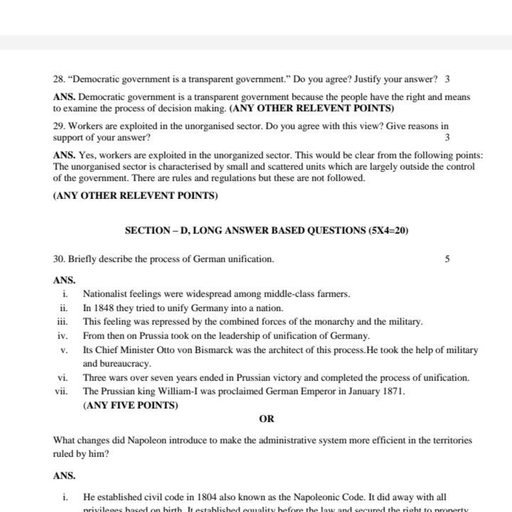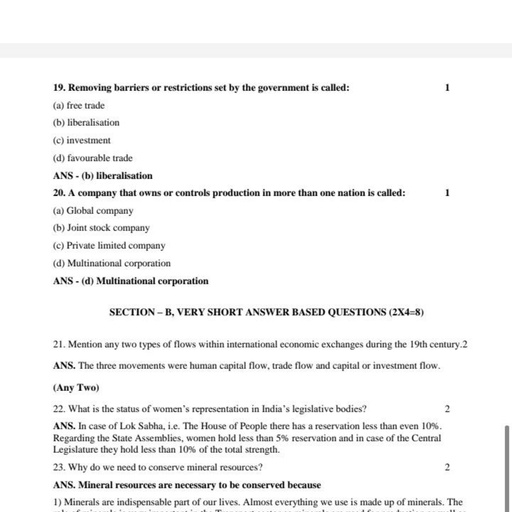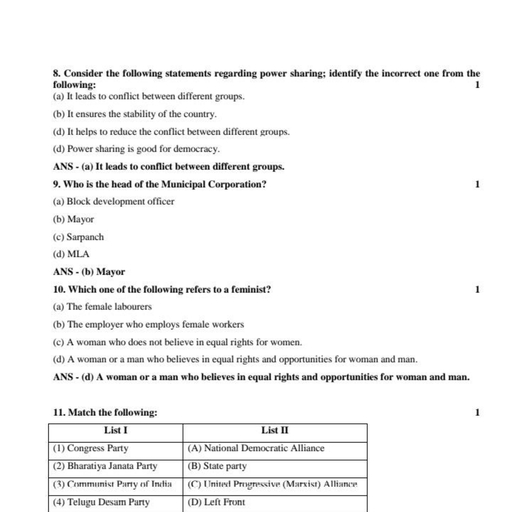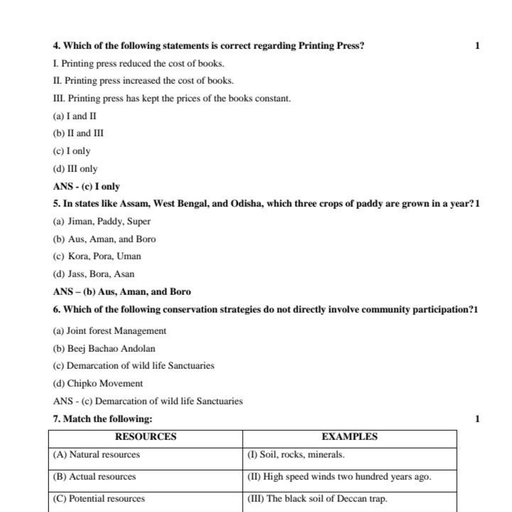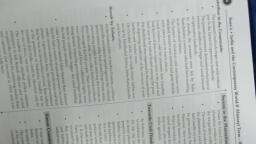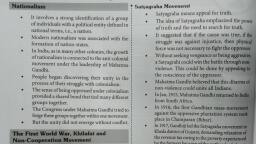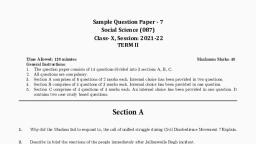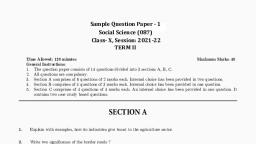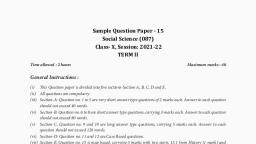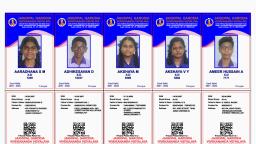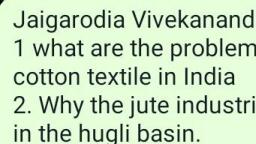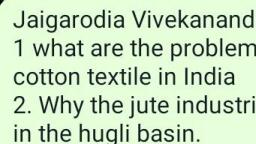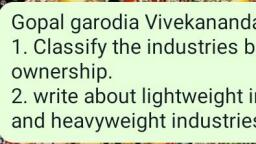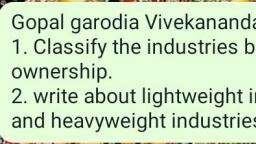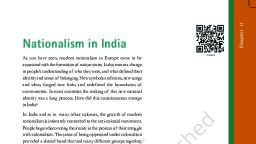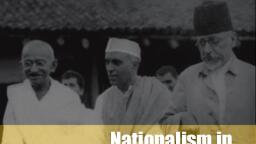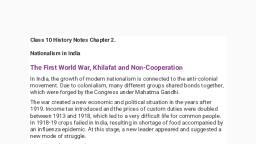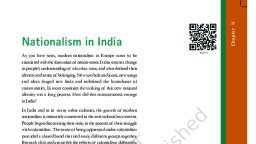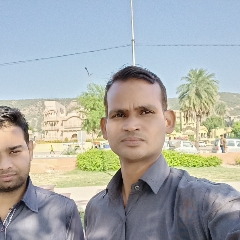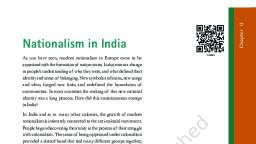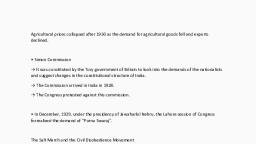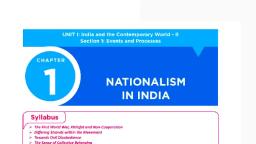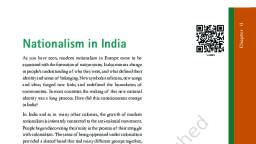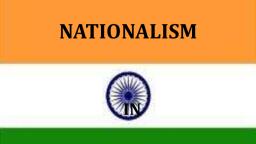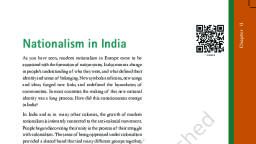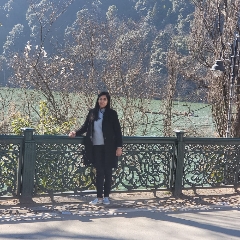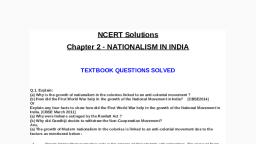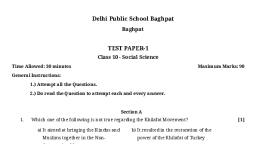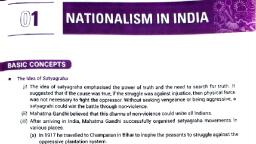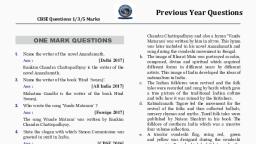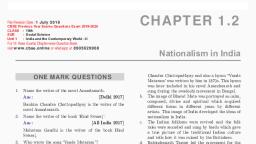Page 1 :
Sura’, , ©, , The business class wanted protection against ¢, imports of foreign goods and a rupee-sterling ', foreign exchange ratio that would discourage \, imports. They also opposed the colonial policies |, that restricted business activities., + To organize business interests, the business, class in 1920 formed the Indian Industrial and, Commercial Congress and the Federation of the, Indian Chamber of Commerce and Industries, (FICCI) in 1927 by Purshottamdas Thakurdas, and G.D. Birla., ¢ Thebusiness class, under the leadership of prominent, industrialists such as Purshottamdas Thakurdas, and G_D. Birla, attacked colonial control over :, the Indian economy, gave financial assistance ;, and refused to buy or sell imported goods. ‘, , 1, 1, 1, ', 1, ', 1, 1, t, 1, 1, 1, 1, 1, 1, 1, ', 1, ', 1, 1, i, t, , Limits of Civil Disobedience Movement ', , e The Civil Disobedience Movement was called |, off without the fulfilment of the demand of the, rich peasant communities., , ¢ Manyrich peasant communities decided not to ;, join the restarted Civil Disobedience Movement. ;, , « The Congress was unwilling to support the “no, rent” campaigns due to the fear of upsetting the, rich peasants and landlords., , + Thespread of militant activities, worries of prolonged, business disruptions, growing influences of socialism, amongst the young Congress members and the |, failure of the Round Table Conference led to the ;, withdrawal of support to the movement by the, business class., , . Industrial workers did not —.. Civil Disobedience Movement except in Nagpn ;, ', , , , , , , , s x India and the Contemporary World-II (History) Term - Il x CBSE ~ Cla, , « DrB.R. Ambedkar organised the dalits into i, Depressed Classes Association in 1930, clashes, with Mahatma Gandhi at the second Round Tabl, Conference by demanding separate electorates, for dalits., , Gandhiji began a fast unto death for oppost, the demand of separate electorates for dalits, because he believed that this would disunite., the Indian masses. 4, Ambedkar accepted Gandhiji’s position and the —, result was the Poona Pact of September 1932. —, Poona Pact (September, 1932), , , , , , , °, , ¢ It gave the depressed classes reserved seats in, , provincial and central legislative councils, which, were to be voted in by the general electorate., , Sense of Collective Belonging |, , * Nationalism spreads when people begin to believe, , that they are all part of the same nation, when they, discover some unity that binds them together., This sense of collective belonging came partly, through the experience of united struggles., But there were also a variety of cultural processes, through which nationalism captured people’s, imagination., , + History and fiction, folklore and songs, popular, prints and symbols, all played a part in the making, of nationalism., , Upsurge of Nationalism, , e Asense of unity and nationalism was inspired by, history and fiction, folklore and songs, popular, prints and symbols., , + Abanindranath Tagore painted his famous image, , , , , , , It was signed between Ambedkar and Gandhiji. a, , , , , , , , , , Chapter 2: Nationalism in India, , , , Boycott: The refusal, form of protest., , In 1921, Gandhiji had designed the tri-colour Swaraj flag (red, green and yellow) with the spinning wheel, at the centre. This flag represented the Gandhian ideal of self-help. :, The glorious developments in the ancient times when art and architecture, science = _ eee, religion and culture, law and philosophy, and crafts and trade flourished were discover e help, history. This instilled pride and united the Indians., , , , 1918 ~ 1919; Peasant movement in Uttar Pradesh, 1919 - Rowlatt Act, Jallianwala Bagh Massacre, Hartal strike against the Rowlatt Act, , 1921 ~ Non-cooperation Movement and Khilfat Movement, , 1922 - ChauriChaura incident, withdrawal of Non-cooperation Movement, , 1928 - Simon Commission in India, , 1929 - Lahore Congress adopted demands for Purna Swaraj., , 1930 ~ Civil Disobedience Movement at Dandi, , 1931 - Gandhi-Irwin Pact, End of Civil Disobedience Movement, Poona Pact was signed, , 1932 ~ Civil Disobedience Movement relaunched., , , , I to deal and associate with people, or participate in activities, or buy and use things; usually a, , Begar: Labour that villagers were forced to contribute without any payment., Forced recruitment: A process by which the colonial state forced people to join the army, Picket: A form of demonstration or protest by which people block the entrance to a shop factory or offi, : ; office,, , , , : eee sa 1. Which of the following is not true regardi i, Jes) did not participate as of Bharat Mata. In this painting Bharat Mata garding the impact of |, + The dalits (untouchab’ » servative high- portrayed as an ascetic figure; she is calm, (a) Defence expenditure resulted in increased taxe ee ee Warr, eae” akan me y used taxes., he Congress ded eqmposed, divine and spiritual. (b) Forced recruitment of soldiers was introduced j, caste Hindus. sib Loe ai ’s song Vande (c) I ; § was introduced in the Villages, — communes adhyay % “ ¢) Income tax was introduced and custom duties incre:, i organiza ee and communities. (d) The hardship ended with the war as the Brit; «sesh, : a icipat tri-colour - ¢ British i, , , , , , , , , The Peasants of Kheda district co ntroduced the R, uld owlatt, (a) The crop not pay the re Act., , (b) Extreme poverty, (c) A plague epidemic, All of these, , venue because they were affected b, © ., y:
